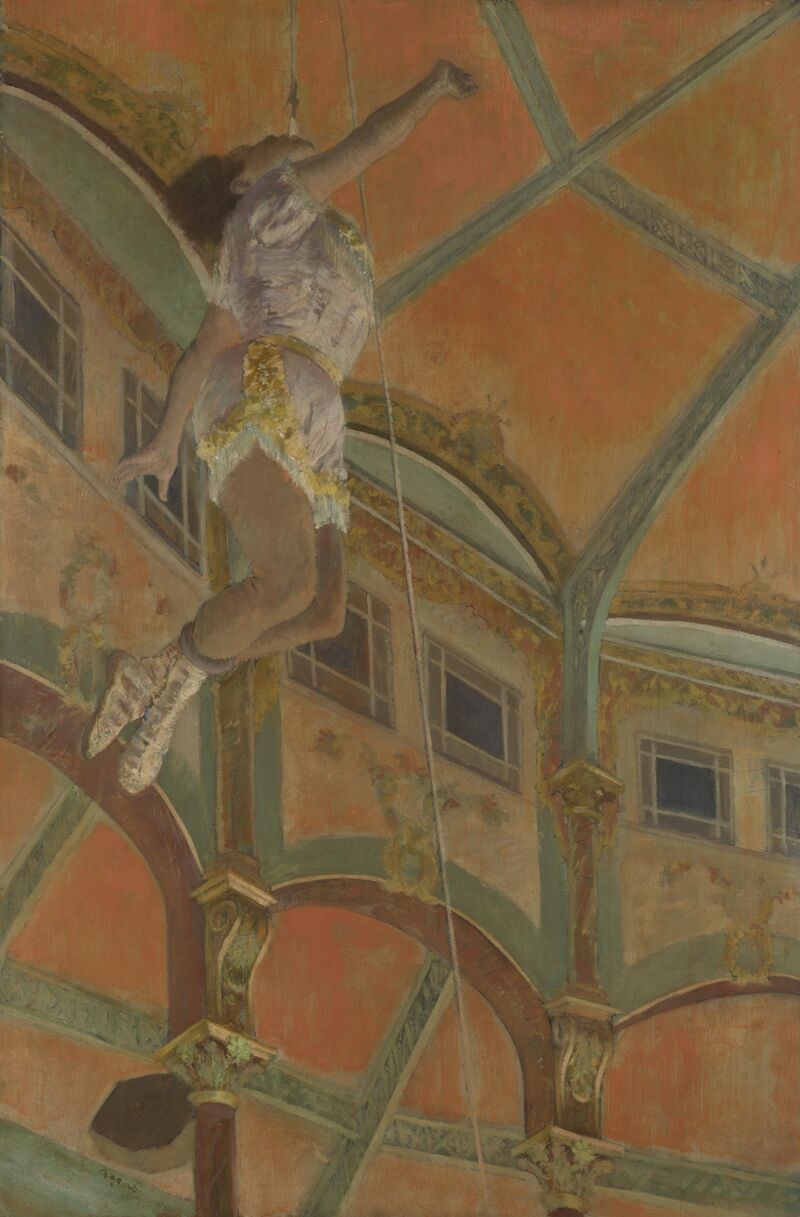A woman bites into a piece of leather attached to a rope. She is then pulled up to the ceiling of the circus tent, 60 meters high, using only the strength of her jaw to prevent her from falling. This feat was the showpiece stunt of circus performer Anna Olga Albertina Brown, better known as Miss La La (1858-1945). At the age of 21, she became the main subject of a painting by Edgar Degas (1834-1917), which is one of the most famous Impressionist paintings. Degas made several studies, interested in the fleetingness of a moment. The unusual, seemingly offset detail and the subject of the painting were the subject of controversy in the late 19th century. The painting was first shown at the Fourth Impressionist Exhibition in April 1879. The Discover Degas & Miss La La exhibition is entirely dedicated to the painting and takes a deep dive into the creation of the artwork with previously unpublished photographs and new research findings. It can be seen at the National Gallery in London from June 6 to September 1.
The painting Miss La La at the Cirque Fernando is the only circus painting by Degas and his only one in which a black person is identifiable. Miss La La was born in Szczecin in what is now Poland. She was a star in Europe and repeatedly amazed spectators with her stunts. For example, she lifted people or a 100 kg cannon on a short rope using only her teeth. At the end of the 1880s, she ended her circus career, which she had started at the age of nine. She married a contortionist and had three daughters, who later also became successful circus performers.



























